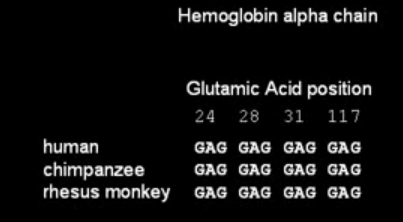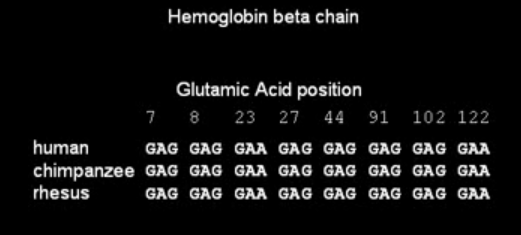i'm guessing you have never taken a college course on evolutionary theory, it does a very good job of explaining all that except the origin of life - which is a different scientific discipline altogether. on the other hand, intelligent design leaves everything to be explain since it fails to explain any of it.
Creationists often complain that science supposedly says there was only one universal ancestor of all livings and that along the way, we evolved both into, and then from, bacteria. But that doesn’t seem to be the case. 21st century revelations in genomic research now imply that the origins of evolution come quite a while after the origin of life. There are now indications that at the root of each of the largest possible taxonomic divisions, there was a point when “descent” (as it is currently understood) was not yet occuring, (at least not in any determinable lineage) and instead there was a sort of horozontal gene transfer going on which could not truly be considered part of the evolutionary process.
By definition, evolution requires inherited genetic frequencies, but the co-requirement of "descent with modification" only allows for one series of ancestors rather than multiple lines of largely unrelated ones being inexplicably blended together. While taxonomy still points to a single common ancestor for all eukaryotes, that ancestor seems to be one of two or maybe three cellular siblings who evidently did not all descend from any sort of shared conventional parent! So at the point where an actual evolutionary phylogeny began to take over more or less exclusively, the domain, Eukarya had evidently already emerged separately and quite distinct from either of the "prokaryote" lineages.
The only way to objectively categorize all sorts of life is by their common characters, those features shared by every member of that collective and only by them. This is how their traits become diagnostic and directly indicative of unique groups. Let us also remember that the first man to attempt to classify all living things was a convinced Christian creationist who knew of no other option as he had never heard of evolution, and had never even conceived of common ancestry, and therefore certainly wasn’t trying to defend or promote either one. But the system he originally devised, -which is still in use today- determines that everything that is truly alive can be divided into two main branches which each then continue diverging in an ongoing series of subdivisions emerging within parental sets, henceforth known as clades.
The accuracy of divisions at the base of Eukarya are still being explored, because Protista turned out to be way too diverse to be considered a single grouping. But there’s no speculation required to determine that humans definitely descend from eukaryotes because it is a verifiable fact that every one of our cells is initially nucleic.
Moving on, one notable subset of Eukarya is Opisthokonta, who's gammete cells have a single posterior flagellum. One subset of this this group is Metazoa, also known as Kingdom, Animalia, multicellular opisthokonts which must ingest other organisms in some sort of digestive tract in order to survive. The biological definition, and in fact even the common dictionary defintions describe humans as belonging to the animal kingdom. Creationists howl at that idea that they should be animals, but if you have any knowledge at all of what an animal even is, then you know that you are one! This isn’t a matter of opinion either; It is a fact, and we can prove it!
Taxonomy is based as much on an organism's physiognamy, reproduction, and development as it is on the form itself. For this reason, the animal kingdom is then divided between the sponges, and everything more advanced than that -including Bilateria. These are triploblast animals which at some stage of development are bilaterally-symetrical. One subset of that is Coelomata, bilaterally-symetrical animals with a tubular internal digestive cavity. One of its subsequent subdivisions is Deuterostomia, coelomates in which early development of the digestive tract begins with a blastopore opening the anal orafice before the one for the mouth.
This is a strange thing to have in common with every other 'higher" life form. If they were specially-created, one might think that any of them could develop by some other means, or in some other order. Maybe snails would develop like mammals, and fish develop like squids, something like that, something that wouldn't only indicate an inherited trait consistent with both the genetics and morphology of common ancestry. But instead, every vertebrate has red blood while chelicerates and mollusks all have blue blood, with no exceptions on either side. Everything we see in nature consistently adheres to everything we would expect of a chain of inherited variations carried down through flowering lines of descent, just as it is in this case too. Starfish, sea urchins, acorn worms and every single thing that ever had a spinal chord all develop the opening for the anus first. Isn't that odd? The common ancestry model obvious explains this fact, but to date no would-be critic of evolution has ever been able to offer any explanation of this, or any of the other trends we see in taxonomy.
The next definitely determinable division includes Chordata, Deuterostomes with a spinal chord. This group includes Craniates, which are Chordates with a brain enclosed inside a skull. A subset of this group also includes vertebrates, which also have spinal vertebrae descending from the skull. And the next subset is Gnathostomata, vertebrates that have all that plus a jawbone.
Remember that we’re only following one lineage, and that each of the left or right turns we take cause us to overlook the other branches that may become just as hugely diverse as the one we’re on; sometimes much more so. But staying on our course, the next fork in the road lies between Gnathostomes who’s skeletons are either cartilaginous or calcified. The right turn here leads us to Sarcopterygii, bony vertebrates which have both lungs and legs. One subset of that are the Stegocephalians; limbed vertebrates with digits on the ends of their appendages. This clade includes a sub-clade called Tetrapoda, which are now gill-less Stegocephalians which are skeletally-adapted for four limbs. Included in that are the Anthracosaurs, pentadactyl post-aquatic 'terrestrial' tetrapods. We now also begin to see more pronounced development of the brain.
One of the anthracosaurian subsets reveals a seemingly small aberration but one which is among the rarest and most profound because the difference is developmental. These are usually the most integral and therefore the hardest things to change, and normally wouldn’t be expected to be significant –unless the environment changed profoundly, as it would in the adaptation from sea to land. The development of the amnion made this transition possible, and was evidently inherited by all the mammals, reptiles, and birds to come since.
[cont]

).......... 3 Billion years isn't enough time............
??
which would indicate creationism is wrong.the mathematical probability of evolution is 1. after an event occurs, it's probability becomes a certainty.(PS: Rhetorical question.........no need to answer)

